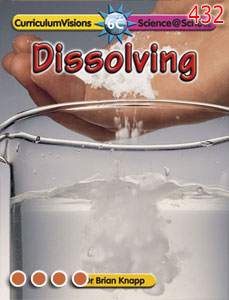All water contains minerals dissolved in it. You cannot see these minerals. For example, if you added a teaspoon of salt to a glass of water it would soon dissolve and become invisible.
So, just because water looks clear does not mean it is pure water. In fact, the presence of some minerals in water is useful: we have fluoride in water to help stop tooth decay.
But minerals of limestone can have an effect on washing, and also on heating devices that use water.
If water has a high limestone mineral content it is called hard water. Hard water will not allow soaps and detergents to make suds. The limestone minerals dissolve well in cold water, but come out of solution in hot water. It is hottest where there is a heating element in the water, such as in a kettle. This is why kettle elements develop 'fur' or 'limescale coating'. This coating is pure limestone. It is rock. When it completely coats an element it stops the heat getting to the water and makes the element overheat, causing it to burn out.
You can dissolve other chemicals in hard water to combine with the limestone minerals and stop them causing problems. That is called water softening.




